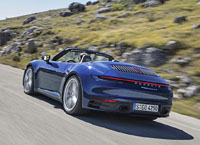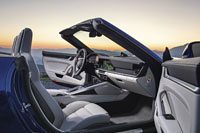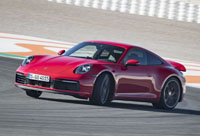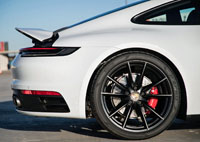
During the launch of the all-new 911 Carrera, Porsche put on a runway-style fashion show highlighting each of the iconic model’s eight generations, along with numerous body styles and other permutations. While it would’ve been incorrect to dub any of these 911 successors as “retro”, being that the car was and still is an unbroken continuation of an ongoing model, some features, particularly its triangular “no-draft” vent windows, were only removed near the turn of the century with the onset of its water-cooled engine. Now Porsche is a leader in multi-zone automatic climate control system technology, particularly when it comes to the new 911 Cabriolet.

The German automaker recently developed an interior temperature sensor that can detect when the 911 Cabriolet’s retractable cloth top is opening, and then quickly make all the necessary adjustments so that front occupants won’t feel a change in cabin temperature. The advanced system incorporates 20 external and 20 internal sensors to continuously process 350-plus signals in half-second intervals, these including outlet, exterior, coolant temperatures, engine speeds, insolation, and vehicle speed. Once factoring in information from the soft-top, doors and seat positioning the system will slowly suppress a specific sensor while the convertible top is being opened, resulting ideal air temperature, air ventilation volume and air distribution to each occupant.

In a press release Porsche goes so far to claim that “911 Cabriolet drivers are surrounded by a pleasant freshness” “… even in the searing summer heat of the city,” stating that its new intelligent climate control system is especially useful at low speeds.
The system is also effective when driving with the top down in cooler temperatures, eliminating the all too common “warm feet, cool head” scenario that anyone who’s driven al fresco in winter will be familiar with. Porsche’s intelligent climate control system disseminates more warm air through the centre vents, which gives the driver and front passenger “a cozy veil of heat without having the unpleasant sensation of air being blown in their faces,” continues Porsche.
“Blissfully warm hands on the steering wheel” is another bonus that allows the 911 Cabriolet’s driver to forgo warm winter gloves, claims Porsche, while both front occupants can stow their winter jackets in the trunk.
Story credit: Trevor Hofmann
Photo credits: Porsche



